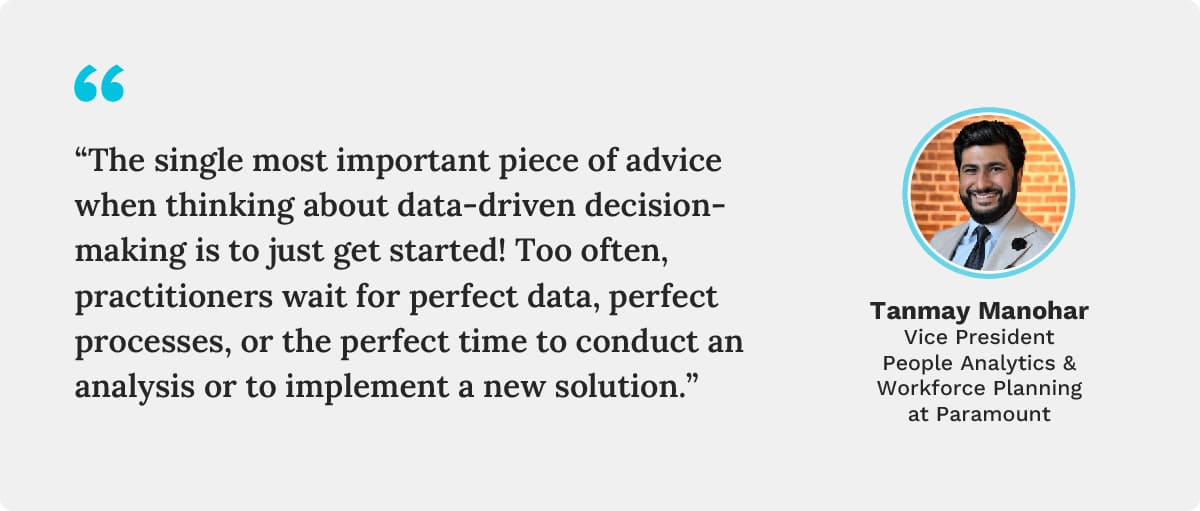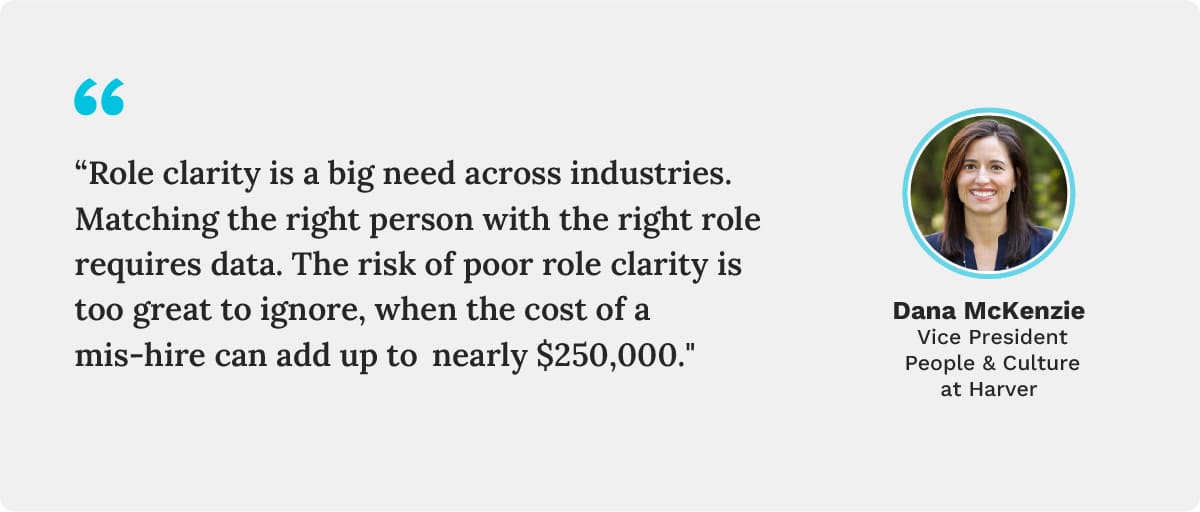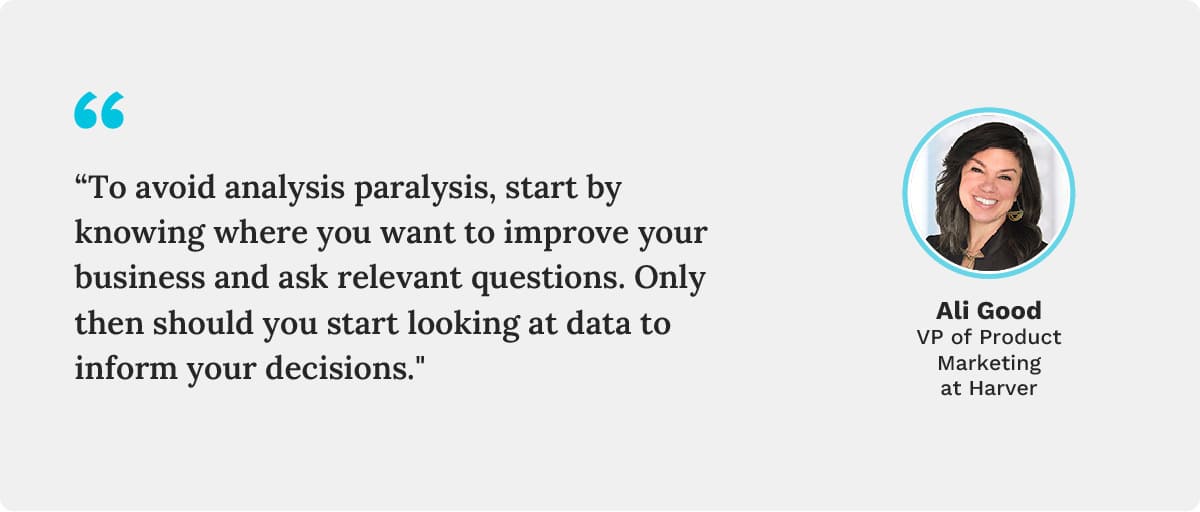One of the top questions we at Harver get from talent leaders is, “How can we better use data?”
For some enterprise companies, it’s about optimizing how they leverage data to support better talent decisions. But for many organizations, it’s more about how to get started with analyzing and acting on data.
Adopting a more data-driven approach to acquiring and managing talent is critical for success in 2024 and beyond. To help inform and inspire you, I checked in with some experts. Read on to see what these analytics masters, HR practitioners, and data lovers have to say about getting started with data.
What's in?
My #1 advice for data-driven decision-making

Tanmay Manohar
Vice President, People Analytics & Workforce Planning at Paramount
LinkedIn
The single most important piece of advice when thinking about data-driven decision-making is to just get started! Too often, practitioners wait for perfect data, perfect processes, or the perfect time to conduct an analysis or to implement a new solution.

Remember that the longer you spin your wheels, the longer you are delaying improvements that could benefit the stakeholders in your ecosystem—whether that be your applicants, your employees, or the communities in which your company operates.
My department often runs a pilot first to validate our approach. Then, as soon as our success metrics are realized, we proceed with our broader implementation plans. The pilot either gives us rapid buy-in for expansion, or allows us to quickly pivot our efforts to a different area.
Using data to inform role clarity

Dana McKenzie
Vice President, People & Culture at Harver
LinkedIn
Role clarity is a big need across industries. Meeting this need requires data. Given the combination of layoffs and the reduced recruiting spend for hiring replacements, many organizations are making do with a leaner staff. This shift can translate into positions being meshed and morphed, making it harder to match the right person with the right role. The risk of poor role clarity is too great to ignore. SHRM notes that the cost of a mis-hire can add up to nearly $250,000.
Here is an example of how Harver uses data to make role clarity as clear as possible with our own hiring. Previously, our account management and industrial-organizational practitioner roles were more discrete. Now that our I-Os spend more time interfacing directly with customers, success in role now requires a combination of I-O and account manager skills.

Because data is critical for optimizing role clarity, we scoped out this new, more account-management-focused I-O position by:
- Defining what success looks like during a competency-based intake with the hiring manager
- Creating a “hybrid” job description that pulls in relevant I-O and account manager competencies from our library of 900+ job profiles
- Assessing job seeker traits via our behavioral assessment, which maps back to our readymade or custom job profiles
- Interviewing against these same “hybrid” competencies for consistency and rigor
- Layering in compensation benchmarking data to ensure we’re inline with the industry
Like what you see?
Don’t miss out. Subscribe to our quarterly digest to get the latest TA and TM resources delivered right to your inbox.
How to avoid analysis paralysis

Ali Good
Vice President, Product Marketing at Harver
LinkedIn
Say it with me, folks: “Analysis paralysis.” You know, that feeling of being stuck when working with information? Diving into data without a plan is one of the main mistakes you can make – you’ll quickly get lost or overwhelmed (or both).
Too much data and you feel like you’re drinking from a firehose. Meanwhile, too little analysis — especially with the wealth of talent analytics available today — is a classic case of “water, water everywhere, but not a drop to drink.”

You don’t have to choose between you drowning in data or your strategies dying from thirst. At Gartner ReimagineHR in Orlando, I picked up a great approach to avoiding analysis paralysis. Here’s my take on what I learned from Gartner Analyst Emi Chiba:
- Goal & Hypothesis: Start by knowing what you want to improve and ask questions about that
- Analysis: Then start looking at the data for insights to inform your decisions
- Action & Optimization: Act on your insights, then ask a set of ever-deepening questions for continuous improvement
“Asking a set of ever-deepening questions” especially stuck with me. By diving down rather than across, you can stay on track and keep moving in the right direction towards action. If you start jumping around to unrelated goals or questions, you’ll find yourself too far afield and maybe even stuck in the dreaded state of analysis paralysis.
Have questions about using talent data?
Watch this video to see how Harver’s Insights Dashboard can help your talent teams make better, faster decisions, with 200+ KPIs and insights available.
You can also schedule a demo to learn more about Harver’s full suite of automated solutions.



